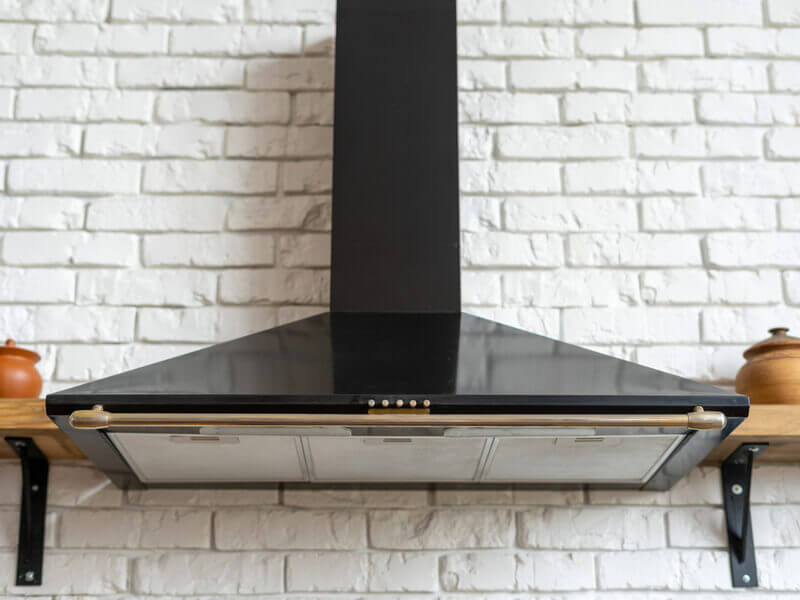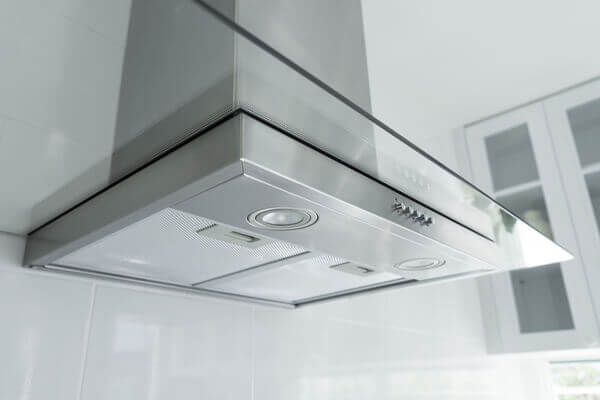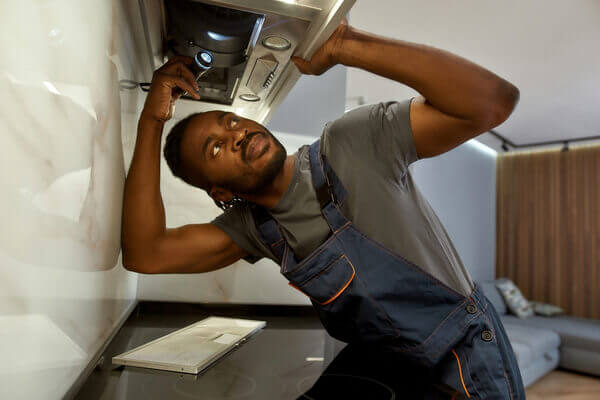A range hood has become an important modern kitchen appliance for many Canadian homeowners, especially when planning kitchen renovations. With a high-power fan, range hoods capture the contaminated air right above your stove range. It helps to eliminate excessive airborne grease, heat, steam and smoke. As range hoods play such an important part in our kitchens, it is equally important to make sure that they are installed securely to avoid any sudden accidents while you’re cooking. Because range hoods are expensive, installing them should be done with caution. The project requires strong power tools along with a professional understanding of electrical and mechanical work. Here are three major reasons why you should never DIY a range hood installation.
1. Range Hoods Are Expensive
Kitchen range hoods are typically expensive and their cost depends on several factors. Before purchasing a range hood, check for its CFM rating. The fan’s ability to move air inside the range is measured in CFM (cubic feet per minute). Higher CFM leads to higher costs. Other than CFM size, type, brand, material and mode of air blowing are the cost affecting parts. You spend a considerable amount of money purchasing such an expensive appliance, you need to make sure that it’s installed securely without damaging the structure of your kitchen or the appliance itself. The store from which you purchased the range hood can help you install it or you can hire a local pro from HomeStars for the job.
2. Installation Requires Mechanical and Electrical Expertise
Range hood installation is a multifaceted job. You have to make sure that it’s connected to your stove range and electrical circuits running behind your drywall. Even though a kitchen range hood is installed inside a house, it requires an outlet duct on the exterior wall of the house to blow out the forced air. You can choose a ductless rangehood as well based on your budget. Once you’ve made your purchase, installing that machine is not one person’s job as they are very heavy. You can hire a team of professionals to install the range hood who will take care of the electrical and mechanical work. It includes everything from establishing secure wiring connections to building ducts with an external output.
3. Requires Purchasing Major Power Tools
Range hood installation is a major project which requires electrical power tools to cut and drill through kitchen surfaces. You will need a power drill to create holes in the walls for ducts and cables. You will need a reciprocating or hole saw to cut a vent hole through your interior kitchen wall. Other than these major power tools, you will also need a bunch of hand tools such as a hammer, screwdriver, caulking gun, fire cutters and strippers. Purchasing these tools can be an added expense, especially if you do not plan to use them again. You can always rent these tools from a local store as well for a fixed price. Instead of spending on power and hand tools, you can easily hire a local pro for the project who owns the tools and won’t charge you extra for them.
Range hoods are required only for an interior kitchen setup, not for an outdoor open-air kitchen. However, if you’re planning to build a full-range chef’s kitchen out on your patio with a canopy, you will need a range hood there as well. An outdoor kitchen expert like New Age can help you with such an extensive project. Be it an outdoor or indoor range hood installation project, get in touch with a local expert to get it done safely and securely.


